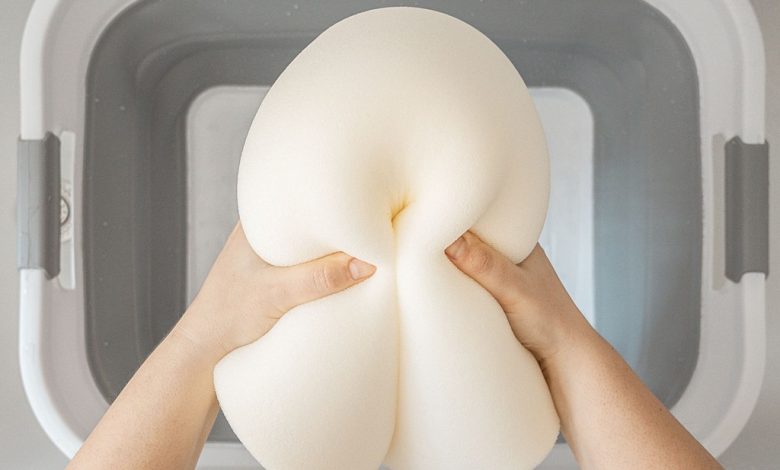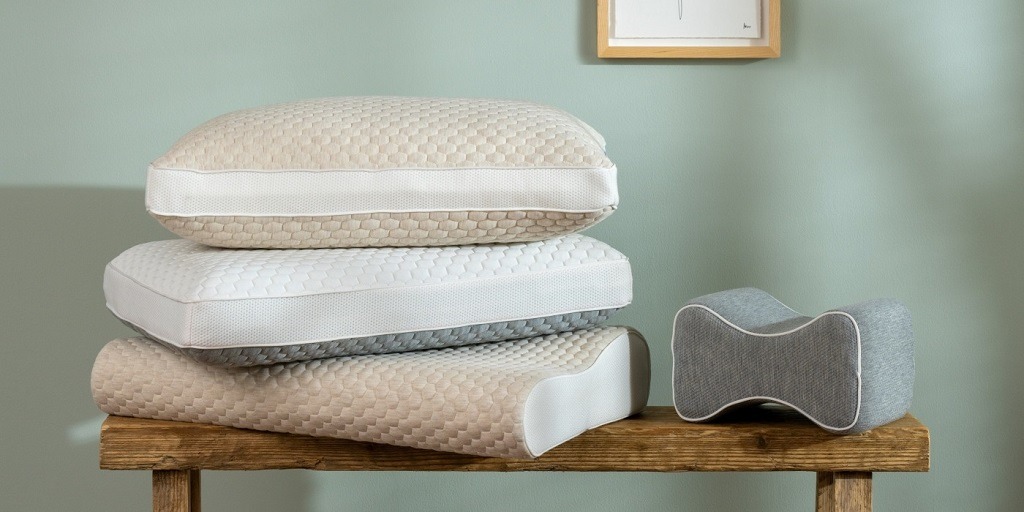How to Wash Memory Foam Pillows Without Ruining Them

Memory foam pillows provide unmatched comfort and support, making them a top choice for quality sleep. But when it comes to cleaning, most people are unsure how to wash memory foam pillows without ruining them. If done incorrectly, washing can compromise the foam’s integrity, shorten the pillow’s lifespan, or lead to mold buildup.
This guide walks you through the safest, most effective methods to clean memory foam pillows while keeping them as fresh and supportive as the day you bought them.
Why Proper Cleaning Matters
Memory foam is a high-density viscoelastic material designed to conform to your head and neck. It reacts to body heat and pressure, offering therapeutic support. However, it’s also highly absorbent and slow-drying, making it prone to damage if soaked in water or washed improperly.
Studies by the National Sleep Foundation show that 40% of Americans suffer from poor sleep, and dirty pillows contribute significantly due to allergens, dust mites, and bacteria. That’s why regular, safe cleaning is essential—not just for hygiene, but for health and sleep quality.
What You Should Never Do

Before diving into how to wash memory foam pillows without ruining them, it’s important to know what to avoid. Many people toss their pillows in the washer or dryer, assuming it’s the same as cleaning regular bedding. This is a costly mistake.
- Never machine-wash memory foam. Agitation from the washer can tear the foam and destroy its structure.
- Avoid using a dryer. High heat breaks down the foam’s elasticity and can cause it to crumble.
- Don’t use bleach or harsh chemicals. These can degrade the foam and irritate the skin.
Anecdotal reports from forums like Reddit and Quora confirm what experts say: people who machine-wash their memory foam pillows often regret it due to clumping, distortion, or even total disintegration.
The Best Way to Clean Memory Foam Pillows
There are two safe approaches: spot cleaning and deep soaking. The method you choose depends on the level of dirt and whether it’s just a surface stain or a full refresh.
Spot Cleaning for Light Stains
Spot cleaning is ideal for minor spills or surface stains. Here’s how:
- Mix a mild detergent with lukewarm water.
- Dip a clean cloth into the soapy water. Wring it out so it’s damp, not wet.
- Gently blot the stained area. Avoid scrubbing.
- Use another cloth dipped in clean water to remove detergent residue.
- Pat dry with a towel and allow it to air-dry completely before use.
This method keeps moisture out of the core and reduces drying time. It’s effective for makeup, drool stains, or food spills.
Deep Cleaning for Odor or Sweat Buildup
Over time, sweat and oils can penetrate deep into the pillow, requiring more than a surface clean.
- Fill a bathtub or basin with lukewarm water. Add a small amount of gentle detergent.
- Submerge the pillow briefly and squeeze gently to allow the water to penetrate. Avoid twisting.
- Drain the soapy water, then refill with clean water to rinse.
- Repeat squeezing until all soap is gone.
- Press out excess water without wringing.
- Lay flat on a dry towel, ideally outside in indirect sunlight.
Let it dry for at least 24 hours. Avoid humid environments which can trap moisture inside the foam.
What About Deodorizing?
Memory foam can retain odors from sweat, pets, or cigarette smoke. Between deep cleanings, sprinkle baking soda on the pillow. Let it sit for 30 minutes, then vacuum with a handheld attachment. This neutralizes odors without moisture.
Some users also swear by a light mist of a vinegar-water solution for stubborn smells. Use sparingly and only during spot cleaning to avoid over-saturation.
How Often Should You Clean?
Clean your memory foam pillow every 2 to 3 months, depending on use and environment. Spot clean as needed. Always use a pillow protector to reduce the need for deep cleaning.
According to a 2022 survey by Good Housekeeping, over 55% of users only clean their pillows once a year, risking dust mite infestation and skin irritation. Regular care extends the pillow’s lifespan by 2-3 years.
Additional Tips for Pillow Longevity
- Always use a breathable pillowcase and a waterproof pillow protector.
- Rotate your pillow monthly to prevent uneven wear.
- Keep it away from direct heat sources, such as radiators or sunlight.
These small habits can preserve the shape and function of your memory foam pillow over time.
Opinions From Experts and Users
Experts like those at Sleep Foundation and Consumer Reports recommend hand-washing only and avoiding all forms of mechanical agitation. Some pillow manufacturers even state that water exposure voids the warranty.
However, some users claim that delicate machine cycles with a mesh bag work fine. While tempting, this isn’t worth the risk—especially when one memory foam pillow can cost $40 to $100.
Read More Also: Ten Tips for Boosting Your Creativity
FAQs
Can I put memory foam pillows in the washer?
No. Washing machines can tear and damage the foam. Always wash by hand.
Can I dry a memory foam pillow in the sun?
Indirect sunlight is fine. Avoid direct sunlight, which can cause the foam to break down.
How do I get rid of a smell in my pillow?
Use baking soda or a vinegar-water solution during spot cleaning.
What if my pillow gets soaked by accident?
Remove the moisture with towels, then dry in a well-ventilated space. Consider using a fan.
Are memory foam pillows hypoallergenic?
Many are, but only when kept clean. Dust mites can still live on the surface.
How long do memory foam pillows last?
With proper care, up to 3 years. Replace when it loses shape or causes neck pain.
Can I use essential oils to freshen the pillow?
Yes, but use sparingly. Add a few drops to baking soda before deodorizing.
Read More Also: Five Best E-Book Readers For Android Devices
Final Thought
Knowing how to wash memory foam pillows without ruining them can save you money, improve your sleep, and promote better hygiene. While tempting, shortcuts like machine washing or tumble drying often end in frustration and replacement costs. With just a little care and the right approach, your pillow can remain fresh, supportive, and long-lasting.
Memory foam may be delicate, but with this guide, you’ll never make a cleaning mistake again.


